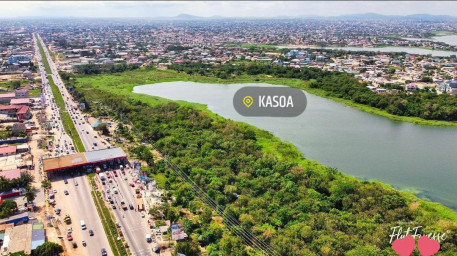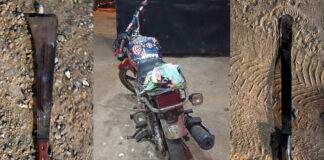
Reputation and Place
Primarily, the value accorded to a place depends on its general reputation and the mental pictures it invokes in the minds of the general public. Globally, city executives, remain sensitive to how a place is portrayed by the media in terms of how media editorial decisions frame and project a particular geographical space in a society. Cities are summaries of the spatial character, values, beliefs, economic strength, and public safety of a place. To a larger extent, how the media portrays a place will either consolidate a place’s positive or negative character. The portrayal of a city also influences the public perception of a place which subsequently affects tourism and economic investments towards such places. City mayors continue to embark on public relations and strategic media efforts to sustain a positive media image of their cities. It must be said that an image of a place remains very important due to its influence on how the residents are perceived either in a proud or shameful embrace. It is against the importance of a city’s positive image that Kasoa, a city in the Greater Accra Region of Ghana continue to show concern about how the city is presented by the media and its related mental-pictures.
How city brands are presented across the media ecosystems induces a mental image and a degree of public perception about a brand which subsequently drives business towards a city’s brand. For instance, how the media select and present city narratives are not only news stories but a lens into a city’s brand values, image, trust, reputation, loyalty, and residents’ behaviour and how subsequent relations towards the city is construed and constructed. An image remains a critical element at the centre of any brand’s story and should form part of cities’ integrated urban reputational management and investment strategies.
In addition, a city’s reputation is an aesthetic window through which the public perceives cities as either positive and trustworthy or less attractive to be engaged with. A place’s positive reputation therefore serves as a business driving force with a tendency to increase investments or a downturn in investments and tourism. Similarly, negative city news headlines such as Kasoa Taxi driver dies after marathon sex with side chick (www.modernghana.com 19/06/2024/), Kasoa ritual murder: ‘Whatever happened, we did it together’ – 15-year-old opens defence (www.ghanaweb.com/11/01/2024), Kasoa: Farmer develops engorged testicles twice the size of football after having sex with ex-girlfriend in a bush www.moderghana.com/28/06/2024) does not only negatively on Kasoa’s reputation but also connotes a dented city image among the general public with global dimensions. Kojo Emmanuel recognises how such negative media image hurts a city, hence his remark that; Kasoa has been “…6 times in the news for wrong reasons…” (www.pulse.com.gh 2/7/2024) with labels such as juvenile delinquency and crime, ritualistic killings, sakawa (internet fraud) hub, illegal drug trade, infamous spiritualists and charlatans.
Subsequently, a city’s lack of a positively driven brand reputation could go a long way to cause public dissatisfaction towards such places with negative impacts on investor confidence and general business, it pushes residents’ confidence to the lowest ebb. City and place reputations are intrinsic public-collateral value, the more the collateral value of a place gets chipped off, the more the city or suburb loses its relevance within broader city landscapes. Negative media reports hurt! University of Pennsylvania study concluded that “…negative information hurts, negative reviews, messages, or rumours hurt…” (Kate Coleman: Status Labs) and are likely to affect how the public relates to brand places. These negative impacts perhaps explain why cities remain concerned and sometimes accuse the media of ‘distorted city media images which focus only on crime, violence, social problems while ignoring positive’ (Journal of Place Management and Development, 2015) news frames. For instance, in a recent publication, the residents of Kasoa expressed their concern about the media’s “deliberate” negative portrayal of Kasoa in a release that “Often than not the name Kasoa has been mentioned in publications regarding criminal and other bad happenings even when those cases did not happen within the Kasoa municipality.” (www.modernghana.com/5/1/2024). This article therefore seeks to ascertain what constitutes Kasoa city brand’s online news subject from the 1st of January to the 30th of June 2024 and the extent of negative subject projections as raised by the residents of the Kasoa municipality. The objective of this analysis is to contribute to the discourse on city and country brand images in society.
Kasoa and Her News Types:
The media might not necessarily have an appetite for negative news, but it rather pays attention to events that are likely to disturb the social order of a city in terms of public safety and the overall peace of the residents. In an era of global news connectivity, negative news reaches diverse readership in speed with greater negativity impact. There is an assumption that negative news story lights up quickly across media platforms hence the concern raised by the ‘concerned citizens of Kasoa’ about the consistent negative portrayal of Kasoa in the media. Are the citizens of a city or place responsible for their media labelling? Certainly, to an extent, the residents of a place’s attitude, activity, cohesive engagement and respect for moral and social values could have a negative spill-over effect on the media’s portrayal of a place. Residents are therefore encouraged to be mindful of their civic responsibilities.
An analysis of the coverage of the Kasoa news subjects confirms the media appetite for negative news rather than positive news stories to an extent in this six-month news analysis. The basis of this data is the application of narrative content analysis of 260 online media from January to June 2024. Kasoa news subjects constitute the study contents, with inter-coder validity reported at 85%. The Chart below in Fig. A and Fig B revealed the media’s taste for negative news story subjects such as killings, accidents, land guards menace, death, murder and crime leading to as high as 86% of negative Kasoa news stories coverage as compared to only 14% of positive news stories.
As pointed out, negative brand stories tend to affect a city’s overall success in a competitive city -for-investment environment. In managing a dent inflicted on a city’s reputation, a concerted consideration should be attached to evolving positive narratives to offset the negative brand tones by encouraging the citizens to remain ethically responsible in their actions. An extensive public orientation on and around the city’s brand image promotion is highly recommended. City mayors should employ consistent media monitoring for their city’s brand sentiments profiling, and social media listening to be ahead of their city’s narratives in the media. Also, communication executives of the city and urban departments need a new orientation about brand image metrics and urbanization story positioning. The fact is, a positive news story doesn’t guarantee extensive media coverage, but depends on the strategic deployment of customized media relations efforts. In all these, the basic approach towards a city’s reputational management is finding answers to the following media intelligence rhetoric: – Is Kasoa’s positive brand story getting the needed media attention, what is the degree of a city’s social media sentiment, news story share, news story reach and the aggregate score of the city’s brand reputation among competing cities or towns? Finding answers to this rhetoric could prevent the negative brand story from impacting negatively on a city’s reputation. It is highly recommended that Kasoa and cities and mayors or city planners turn every single positive initiative into an earn-media strategy to leverage expected negative city brand media sentiments. Although this study did not comprehensively conclude that a city’s negative image may not necessarily be attributed to the citizens’ inflictions nor the media’s appetite for negativity, the study should however be seen not as a critique but as drawing attention to the impact of negative media sentiments on cities and the need to evolve remedies in achieving positive media narratives about places, cities and countries in general.
Fig.A

Fig.B

About the Author: Messan Mawugbe (PhD), Strategic Corporate Communication Consultant. Email: mawugbe@ibnareports.org
Tags: GHANA, Kasoa, MEDIA, NEWS
Source:IBNAreports








